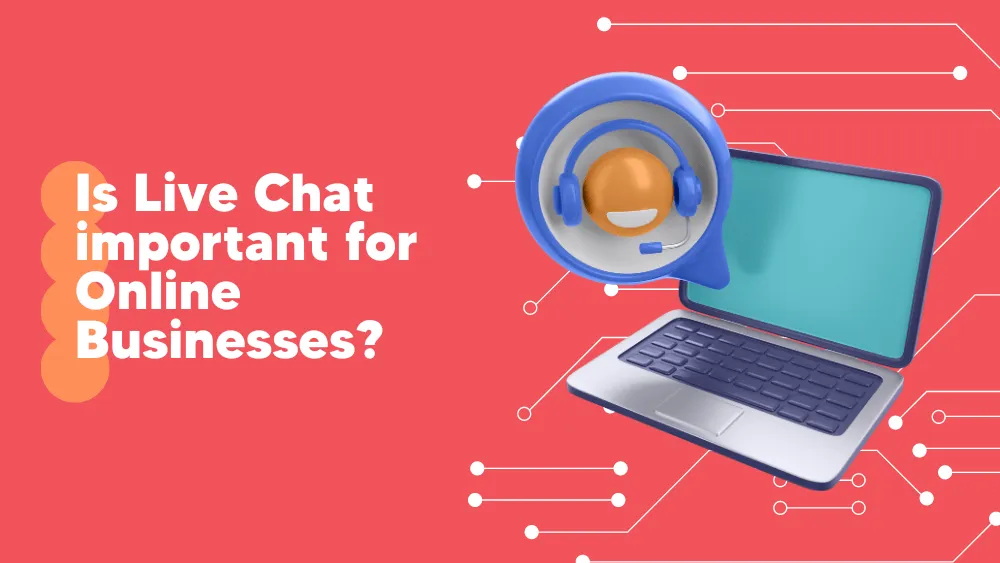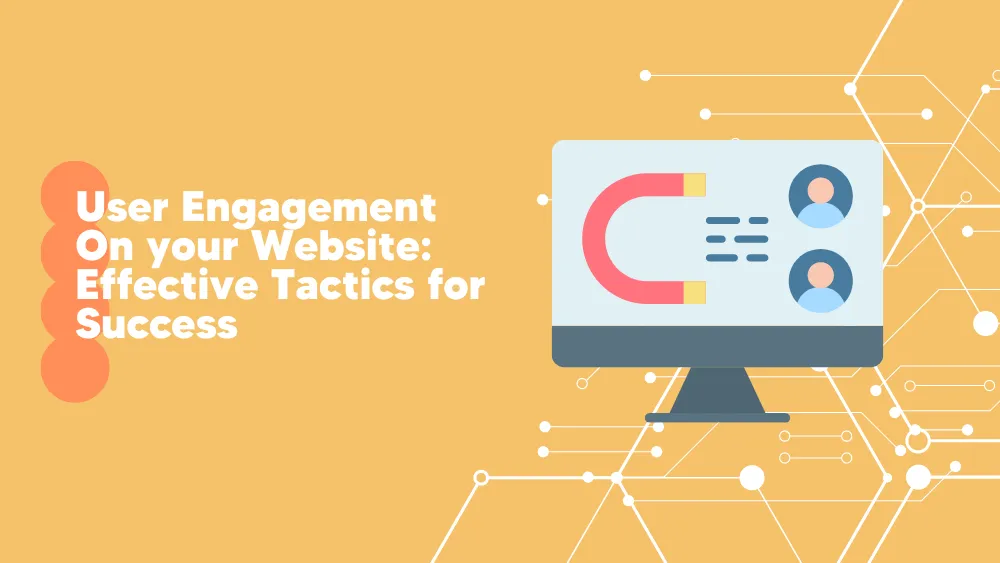
Best Live Chat Software
What is Live Chat Software?
The fundamental key to any business’s success relies on the qualitative customer services they offer. Customers rely on products or services and get influenced by the support you offer. So when it comes to your business, you must find ways to foster your relationship with your customers. Offering good and all-time support can help you prosper and scale your customer base.
Many businesses lack in providing quality support to their customers. For example, one of the customers’ difficulties when shopping online is being disconnected from a representative who can answer their questions precisely and promptly. Businesses can mitigate this issue by using live chat support software to provide an engaging experience to customers.
For a Live Chat Software to be eligible for being added to the live chat category, it must:
- Give website users and customer care representatives access to instant messaging.
- Allow chat windows to start conversations or function independently on a page for prospective questions.
This guide will make you understand the significant aspects of online chat platforms to understand them better. In addition, this will help you make the right decisions and select the appropriate products to meet your business objectives.
Top Software for
Small Business
Medium Business
Enterprise Business
Free Software
Compare Live Chat Software
Zendesk Suite
Freshdesk
Table of Contents
Types of Live Chat Software
Live chat solutions provide:
- A personalized customer experience.
- Improved brand interactions.
- A competitive advantage.
- A way to feel the pulse of your customers.
Implementing a live chat solution for your company can benefit your marketing, sales, and customer support teams throughout the customer journey.
How do live chat tools function? In essence, it operates depending on your particular needs and goals. When customers submit an inquiry, they do it with a specific objective or aim in mind.
Providing the appropriate answer and information is essential for efficient customer service. Choose the agent you must employ to construct a successful live chat support software. Check out the following types:
Live text chat support: Most programs provide ‘text-only’ chat. Numerous clients prefer this product, which has a high conversion rate and great engagement. In addition, most of them do not charge additional fees.
Live voice, video, and text support: Customers can view and communicate with agents. The key benefit of this style is that it provides more personal interaction. This strengthens your agent’s credibility with the customer. An e-commerce transaction in which a consumer must spend a substantial sum of money is advantageous when they want to determine whether or not your organization is trustworthy.
Video, voice, text, and co-browsing: In addition to the previously described categories, there is a feature known as co-browsing. The consumer and customer service representative will traverse a wreal-time web-based application
They can simultaneously view and access the website or digital file. This is useful for filling out online forms and giving clients peace of mind that their personal information will not be saved or misused. It is important to note that co-browsing is distinct from screen sharing, in which only one user controls the screen.
Significant Benefits of using a Live Chat Software
Why use a live chat application? Customer satisfaction requires engagement and communication as crucial aspects. If implemented correctly, live chat can resolve this issue. Knowing the benefits of live chat service providers will allow you to maximize the program’s efficacy and enhance your business operations. Here are a few of its advantages:
Make everything convenient
While waiting for your chat support, users can multitask and perform their online purchasing using a live chat system. The average response time for live chat operators is between 23 and 46 seconds to address a customer’s issue. Compared to call centers, the wait time is shorter. Because 60% of consumers detest waiting more than a minute, it is imperative to offer support and address problems immediately.
In comparison to dialing a 1-800 number and navigating a confusing series of numerical options and prompts, it is also easier to use. A live person who can answer questions while making an online purchase is one of the essential elements of a website, according to 44% of online shoppers.
Boost Sales
Customers’ trust and loyalty will increase if they can communicate with a real person when making a transaction, especially if they are puzzled or reluctant. As a result of the functionality, 62% of consumers are more likely to return and make additional purchases. Additionally, 38% reported making purchases due to the chat session itself.
An agent who can quickly respond to a client’s question and understands the customer’s demands can guide the consumer through the sale process and recommend the appropriate products or services, ensuring that the customer’s shopping basket can be completed.
This can reduce cart abandonment by as much as 30%. In addition, purchasing a customer live chat solution for your sales force demonstrates a 300% return on investment by increasing conversions by at least 20%.
Cost-effectiveness
In business, time is money, and customer chat assistance addresses this concern. It reduces phone call costs (in terms of person-per-hour and toll charges) and interaction costs on average.
Live chat is preferable to phone calls since a single agent may manage numerous chats simultaneously. Even 17-30% less expensive than a phone call. With a deflection rate of 70% from calls to live chat, the waiting line can be reduced to a fraction of the time spent waiting for phone help. This boosts sales and customer service efficiency while reducing the need to hire additional people.
Beat competitors
Internet competition is fierce. Many internet firms don’t use live chat. 9% of 1,000 websites have this support. Live chat usage rose from 38% to 58%. Having a competitive advantage makes you more appealing.
Staying ahead is also essential because more organizations are projected to implement it due to its cost-effectiveness. In addition, its global market is expected to reach $819.2 million by 2020, demonstrating that more consumers consider live chat software a preferable digital customer contact method.
Resolving client issues
Customer pain points are unmet needs or frustrations. Many marketers solve pain problems to generate profits and sales. Live conversation is more intimate than social media blog posts. It allows clients rapid access to confirm the product works as described or ask about a deal to get savings.
Management can monitor conversation history to learn about visitors’ trouble areas and create a remedy. Supervisors and administrators may quickly sift, search, and filter chat history to solve client problems.
Accommodating Rapidly
Customers desire instant replies from all businesses. Small and medium-sized enterprises can use live chat, too. Unfortunately, 42% of US internet consumers cancel transactions if their issues aren’t handled quickly. Delays frustrate customers.
Customers may quit shopping carts, leave your website, and look elsewhere. If your website offers knowledge bases and assistance articles, you can maximize them by allowing chat support to ‘push’ links through chat windows.
Increasing loyalty and service.
Live chat is more customer-satisfying than other channels. 90% of clients feel confident using the live chat button. Customers return to a business that provides hassle-free, easy, and rapid service.
Expand Market Reach
Most of the time, your business’s reach will be limited to your local area because it is difficult to find customers who travel long distances to request services and make purchases. A website does not guarantee that more customers will feel at ease placing orders remotely.
However, having live support reassures customers because they can quickly contact you to arrange purchases and make inquiries. This includes international customers who cannot reach your company by phone due to high international dialing rates.
It is also proactive, allowing your agents to send chat requests to your customers manually or automatically based on a set of predefined rules. This is accomplished through sophisticated monitoring and tracking features that notify your agents of new and returning website visitors.
Key Features of Live Chat Software
The functionality of live chat software can differ between products. Therefore, when selecting a live chat solution for a business, consider which features will benefit the specific use case most. The following are some essential features of live chat software:
Proactive Chat: A feature in which your operators initiate the chat and reach out to your website visitors by providing immediate assistance. This is a highly effective tool for increasing customer satisfaction and engagement. For example, it could include a personalized message as an image or a small live chat window.
Visitor Tracking: This comprehensive tracking facility gives you a deeper understanding of your website’s visitors’ behavior (who are also your potential clients). It includes data such as a visitor’s time spent in the chat, your agents’ overall activity, conversion tracking, and a record of transcript reports, among other things.
Chat evaluation: Customers can rate their interactions with your chat agents. Customer feedback gives you essential information about the quality of your support and any areas to improve customer satisfaction.
Chat Routing: Support agents can transfer chats to any available operators or automatically route customers to the appropriate agent. This benefits your agents because they will not be sluggish when the chat volume increases, and your customers will receive appropriate and timely responses.
Operator supervision: Utilize relevant insights about your operators’ performance to supervise them. This allows you to see which of your agents are performing well and underperforming. This information can be used to train them and improve the quality of your chat support.
Chat surveillance: This feature lets you track detailed chat conversations and see who is currently chatting among your agents. Having this level of control improves your agents’ efficiency and productivity.
Canned responses: Allow canned responses to reduce your agent’s response time. Its definition refers to text snippets that are commonly used in chats. Saving and reusing them saves time because your agents can use them in subsequent chat sessions with just a few keystrokes.
File transfer: An efficient, built-in function for transferring files between chat operators and website visitors ensures convenience. It also has straightforward controls over file types and sizes that are compatible.
Queue times: A feature that gives your visitors an estimate of how long they will have to wait before starting a live chat conversation with your agents, especially when there is a high chat volume. Waiting for a long time may cause your visitors to leave your website, lowering your company’s customer satisfaction. It may also cause a considerable loss of potential sales.
Analytics and reports: This is a necessary feature for tracking essential data such as operator activities, chat histories, conversion tracking, visitor information, and average time spent on chats. These statistics are critical for identifying effective strategies and areas for improvement.
Mobile Optimization: Because many people use their phones to browse the internet, this feature allows your website to assist various website visitors regardless of their device.
Offline forms allow customers to contact you even if chat agents aren’t available around the clock. For example, you could convert the chat widget into a contact form emailed to an agent when a visitor fills it out. Ticketing for offline messages is created by message routing.
Smart Triggers: An intelligent chat system creates a custom trigger for specific circumstances. For example, agents are notified when a website visitor returns to begin a proactive chat session.
Who Uses Live Chat Software?
Professionals that interact directly with customers, such as customer service and sales teams, use live chat to instantly chat with customers or gather data on customer service agent conversations.
Customer service: Customer service teams use live chat software to communicate with website visitors. Ones who use the feature to ask questions or voice concerns. Chat agents can use routing features to transfer conversations to managers if any complaints need to be escalated. Businesses should look for products that integrate with their existing support software when purchasing a live chat solution for customer service.
Sales: Sales teams can generate leads by using live chat software. Because the buyer has expressed interest in the company by starting a conversation via the live chat feature, this is an excellent opportunity to start a sales conversation. However, if a company wants to use live chat to boost sales and conversion rates, it must find a product that integrates with the CRM or system of record.
How Much Does a Live Chat Software Do?
Pricing for live chat can be perplexing. When you have to choose from a sea of vendors selling the same features, it cannot be easy to find live chat software that checks all the boxes. However, because live chat is a high-return investment, you should pay close attention to the pricing of the live chat tools you’ve shortlisted for your business.
Some below-mentioned pointers you need to consider before signing up for a live chat tool:
Per agent software: Many live chat vendors bill their clients based on the number of chat agents who will use the platform. It’s a good plan for fast-growing companies. If you choose this pricing, be aware that some features may change as you add or remove agent seats.
Price based on volume: Similar to per-agent price, but based on website traffic. This price works well for niche firms with constant traffic and predictable live chat expenses. However, it may not work for e-commerce companies that expect a visitor boost around holidays and sales.
Pay-per-lead cost: This pricing model works for marketing teams who wish to create leads via live chat. Variable pricing means you don’t pay a monthly or yearly cost. Instead, you pay per lead over a month or year. Depending on the vendor, lead prices range from $18 to $40.





















